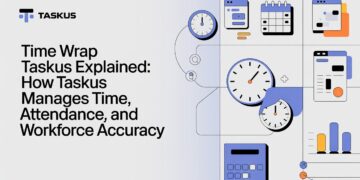Payroll processing involves recording the wages paid to your employees, withholding and remitting payroll taxes (usually every month), submitting federal and state tax deposits, and preparing annual filings and employee W-2s. These tasks often require specialized knowledge of the complex laws that govern them.
Many small businesses wear multiple hats, so prioritizing what must be done can take time and effort. However, the following facts in this article can explain how to do payroll yourself for your small business.
Know Your Taxes
Payroll is a difficult procedure that necessitates a high degree of expertise. It includes calculating and remitting mandated taxes and withholding income and payroll taxes from employees’ paychecks each pay period. It also involves tracking and filing quarterly and year-end tax returns. Handling payroll can also involve compliance with state and local laws regarding workers’ comp, tax withholdings, and deductions. Depending on your business’s complexity and your team’s size, these administrative responsibilities may be better handled by an accounting firm or third-party payroll provider.
If you want to handle payroll, start by gathering the preliminary information needed for processing payroll: obtain an IRS Employer Identification Number (EIN), establish your state and local tax ID numbers, and collect employee financial information such as W-4 forms and 1099s. This information will assist you in configuring the payroll system to handle your company’s payments and maintain correct records.
You’ll need to create a general ledger for each pay period, starting with an initial recording of your employees’ wages, salary amounts, and deductions from their paychecks. Next, you’ll calculate your total net payments to each employee from here and record them in the general ledger.
Know Your Employees
Processing payroll can be complicated, especially for small businesses. Many options are available for small business owners, including outsourcing, hiring an accountant or payroll service provider, or doing it manually. Whatever solution is chosen, grasping all elements of payroll administration is critical. It can include things like pay stub requirements, federal and state tax withholding, and employee W-2 filings.
Knowing your staff well can help determine whether any special considerations are necessary. It can include sick days, vacation days, personal days, and more. But, again, it is essential to have a system for tracking this so that you can accurately calculate the amount each employee should receive for each period.
Once you have all the needed information, it is time to begin calculating payroll. It may be done weekly, biweekly, or semi-monthly. Keep track of how much each employee should be paid, and do not overpay or underpay. The more accurate this is, the less chance you have of incurring costly mistakes.
Know Your Legal Requirements
Payroll calculation and processing can be a complex and exacting task. It includes registering with federal, state, and local tax agencies; calculating employees’ wages; preparing and writing paychecks; and remitting payroll taxes to the IRS and other taxing entities. It also involves ensuring that workers’ compensation insurance is in place and is paid.
In addition, a business owner must understand the impact of any mistakes or miscalculations on the business. Many leading payroll processing companies have safeguards that help ensure accuracy before payday and reduce the risk of costly errors. However, these features are typically not available when you process payroll yourself.
Regardless of how you manage your payroll, there are several things that all small businesses should be aware of before they begin employing staff. First, if you are determined to do payroll, there is a method that involves only a little knowledge, some time, and a robust calculator.
Know Your Payroll Schedule
How you pay your employees can significantly impact their morale and even how much they are paid. However, choosing a payroll schedule is a complex task, as it depends on your business needs and the needs of your employees.
Balancing employee payment schedules with your cash flow and administrative requirements is crucial. However, it’s also worth considering the rhythm of your company’s revenue, ensuring you are not paying out at peaks and troughs when you need cash.
The four most common payroll schedules are monthly, semi-monthly, biweekly, and weekly. Each has advantages and disadvantages, so it’s wise to consider your alternatives before making a choice. Remember, though, that your choice of payroll schedule may be partially up to you, as state laws often stipulate minimum pay periods. In addition, one type of payroll schedule works better for some industries than others. For instance, if your business has hourly workers, then a biweekly payroll schedule might be a good option for you.
Know Your Payroll Software
Several payroll software programs are available to small business owners, making it easy to run payroll and file taxes. These programs can handle a variety of functions, such as pay calculations, deductions, check to print, tax support and filing, and time tracking for employees. Each program has its features, so it is essential to understand your unique needs and research the best options for your business.
Decent payroll software can process payroll in minutes and takes care of calculating, filing, and paying payroll taxes. It also integrates with other accounting software. Read more interesting articles on Tech new master

















